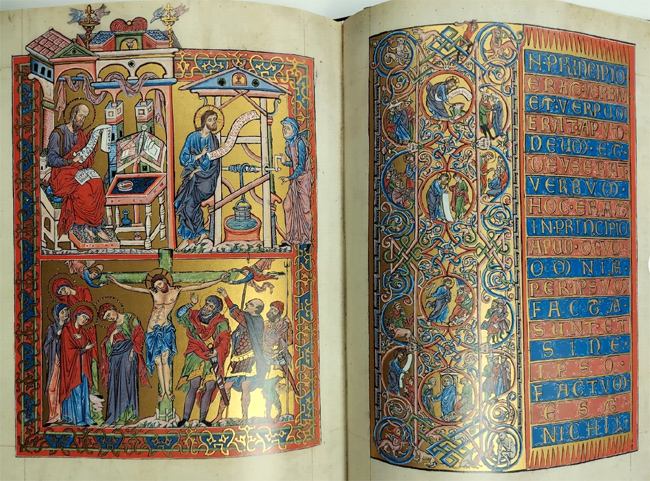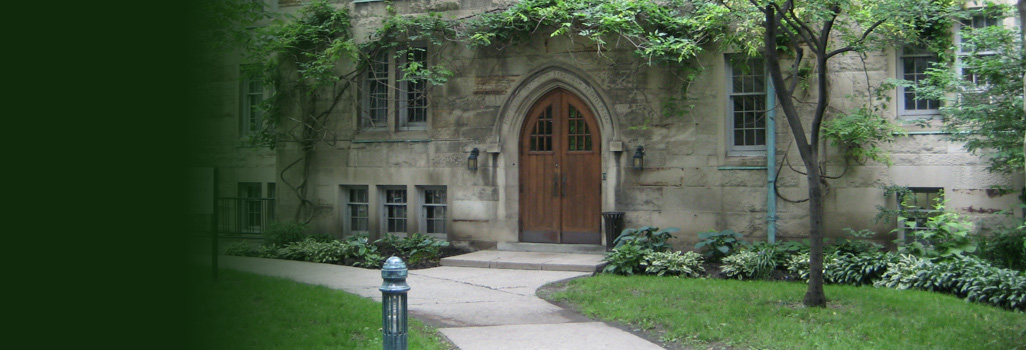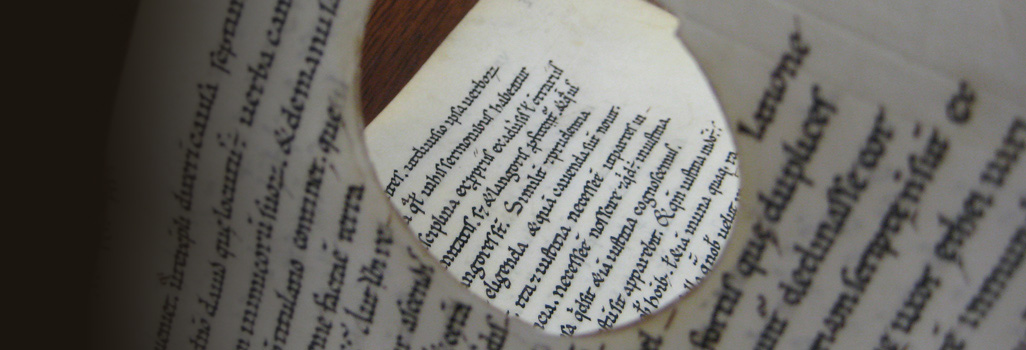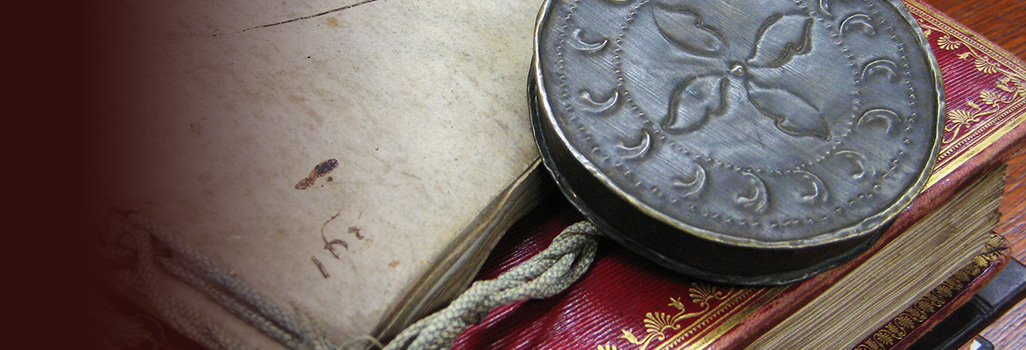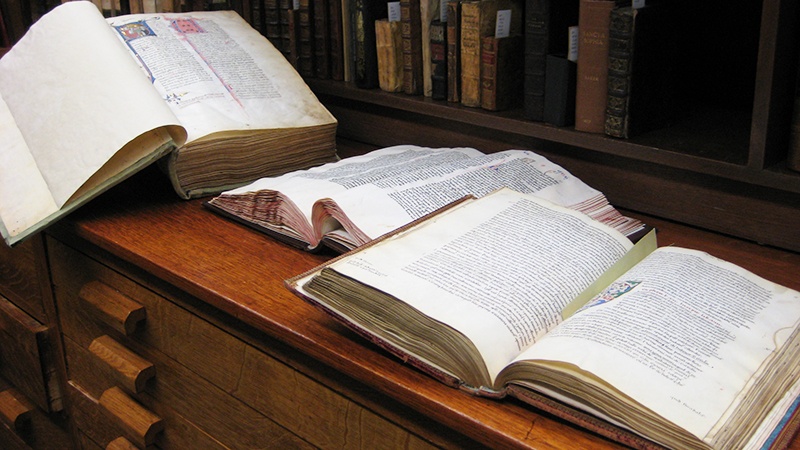
Recent Acquisitions of Manuscripts & Rare Books
Early Dominican Antiphonal
Early Dominican antiphonal (178 folios on vellum, incomplete, approx. 28 folios lacking). Southern France, ca. 1300.
Contains chants required for the performance of the Divine Office from the Vigil of Easter to the 24th Sunday after Trinity. It precisely follows the chants preserved in the authoritative Dominican antiphonal, now Rome, Santa Sabina MS XIV L 1 (dated ca. 1256–1259). The volume was therefore copied after ca. 1260, although the liturgical material alone does not permit a more precise dating. However, both script and decoration suggest a date of ca. 1300 and an origin in southeastern or even Mediterranean France, a center of Dominican preaching from the time of the Cathar Heresy.
The manuscript today, although missing approximately 28 folios, still contains the majority of its seasonal Office chants. Curiously, the first and final folios are misbound: fol. 10 would have originally opened the volume with Vespers on the Vigil of Easter, and fol. 174, the melodic index of hymns, would have originally ended the Antiphonal. It should be noted that few available antiphonals date to this period, and even fewer come from southern France. The square notation, which is typical of Dominican chant books, exhibits the use of the custos (indicating the pitch of the first note of the following line) and of double dividing lines (indicating the sections to be sung by the solo cantor). Both features typify Dominican chant.

Juvenal, Satyrae
Juvenal, Satyrae (with two commentaries by Domitius Caldernius and Georgius Valla). Venice: Theodorus De Ragazonibus De Asula, 1491.
120 leaves unnumbered – a4, b–t6, u8 (a1 and u8 blank). Dated 16 June 1491. Folio, super chancery paper (30.5 x 21 cm). In modern limp vellum with yapp edges signed by noted Parisian bookbinders Lobstein-Laurenchet (between 1969 and 1977). Juvenal, Decimus Iunius (late first cent. AD–early second cent. AD). Purchased from Leaf & Stone.
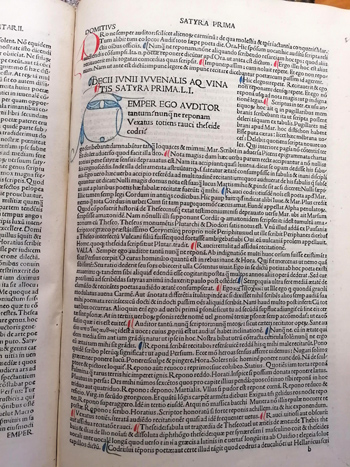
Peter Riga’s Aurora
In June of 2021 PIMS acquired a copy of Peter Riga’s verse Bible, the Aurora. According to an ex-libris in the lower margin of fol. 1r of the codex, the volume belonged to the Chartreuse Notre-Dame de la Prée, near Troyes, a fourteenth-century Carthusian foundation.
The Aurora enjoyed enormous popularity in the later Middle Ages. Even though there are over 470 extant manuscripts of the work around the world today, the contents of the PIMS copy are unique. The PIMS manuscript is the only copy of the Aurora in Canada. It adds to the scope of our manuscript collection, which did not contain any literary or poetic text before.
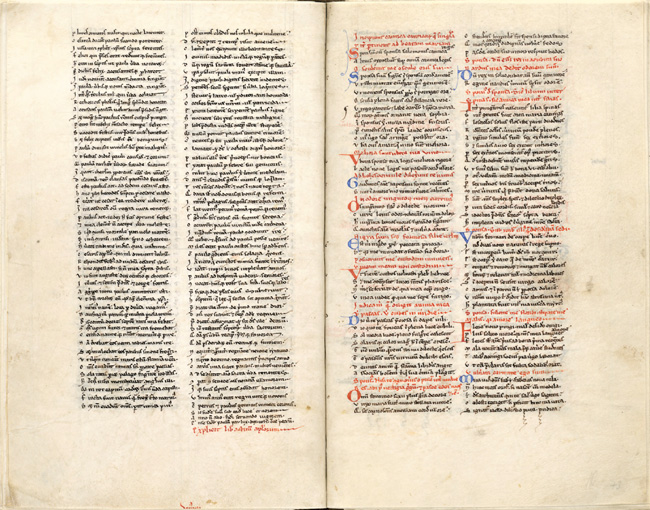
Eleven Original Medieval Documents
These charters, many of which with their seals preserved, were purchased in December 2022 at Christie’s auction from the collection of the late Marvin Colker, a well-known Latinist, who also seems to have been a collector of medieval documents and manuscript leaves. The charters will be invaluable for teaching diplomatics at both PIMS and CMS. The purchase was made possible by the generous support of the Chair of the PIMS Board, Tony Comper. The Library is very grateful for his generosity.
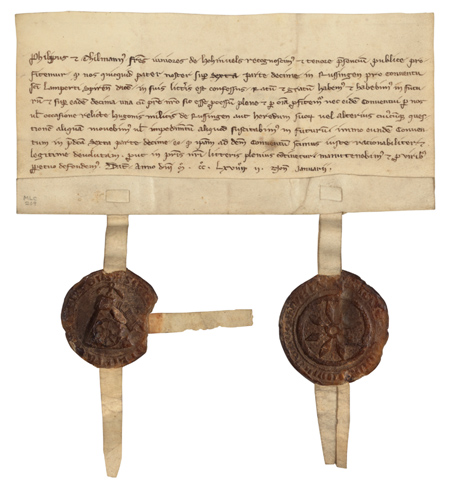
Exempla sacre scripture
Nicolaus Hanapus, Exempla sacre scripture. Paris: Jean Barbier for Jean Petit, ca. 1515.
Nicolaus Hanapus (or Nicolas de Hanapis) was a late thirteenth-century French Dominican who was named Patriarch of Jerusalem in 1288. He died in 1291 when he and all aboard his small vessel perished while attempting to escape the Mameluke conquest of Acre. Hanapus’s Exempla, compiled between 1260 and 1278, were first printed in 1477 with the title Biblia pauperum and attributed to Bonaventure. Hanapus’s compilation, which forms a series of Christian maxims arranged according to topi, is considered to be “a Christian imitation of Valerius Maximus.” Some catalogues confused the author of this printed edition with the Parisian bookseller Jean Petit. Purchased by the Friends of the Library.
D. Haymonis episcopi Halberstattensis homiliarum
D. Haymonis episcopi Halberstattensis homiliarum sive concionum popularium in evangelia de tempore & sanctis, quemadmodum in ecclesiis per totum annum leguntur, nunc primum conjunctim excusarum, pars utraque, hoc est, & hyemalis & aestiualis. Cologne: Jean Prael, 1536.
Jean Prael’s edition of Haymo, which was reprinted in Migne’s Patrologia Latina 118, contains numerous sermons as well as a lengthy commentary on the Psalter and the Song of Moses. Prael’s edition follows the edition of Piere Quentell (Cologne, 1530) by mistakenly attributing the work to Haymo of Halberstadt, an error continued by Migne. Henri Barré (Les homéliaires carolingiens de l’école d’Auxerre [Vatican City, 1962]), was the first to argue that these texts were, in fact, composed by Haymo of Auxerre. The PIMS copy has preserved most of the original binding, although the spine has been professionally rebacked; the original clasps are still intact.
Divi Anselmi archiepiscopi Cantuariensis
Divi Anselmi archiepiscopi Cantuariensis: opera omnia quatuor tomis comprehensa. Hac ultima editione praeter tomi quarti accessionem, ex collatione veterum codicum emendata, notis illustrata, & aliquot novis opusculis aucta. Studio et opera D. Ioannis Picardi Bellovaci canonici regularis ad S. Victoris Parisiensis. Cologne: Peter Cholin, 1612.
Jean Picard’s 1612 edition of Anselm became an early standard edition and was eventually reprinted in Migne’s Patrologia Latina 162. Picard prints the theological and philosophical works of Anselm of Canterbury and (due to confusion over the names) the commentaries by Anselm of Laon. This is the editio princeps for some of the texts printed therein, such as a life of the Cornish Saint Gwinear, mistakenly thought by Picard to have been written by Anselm of Canterbury. The PIMS copy has preserved the original binding.
A Facsimile Edition of the Goslar Gospels
The manuscript was created around 1240 in Goslar (Lower Saxony) or the surrounding area n the aftermath of the inquisition for heresy and execution of the Goslar’s bishop in 1224. The codex, containing thirty full-page illustrations of biblical scenes, was very likely intended for the female Benedictine Monastery of Neuwerk in Goslar. The book owes its importance to a very special production and combines different elements of the diverse styles of manuscript illumination, Romanesque, Gothic, and Byzantine. The volume is now part of the Goslar City Archives, Ms. 2353. Purchased by the Friends of the Library.
